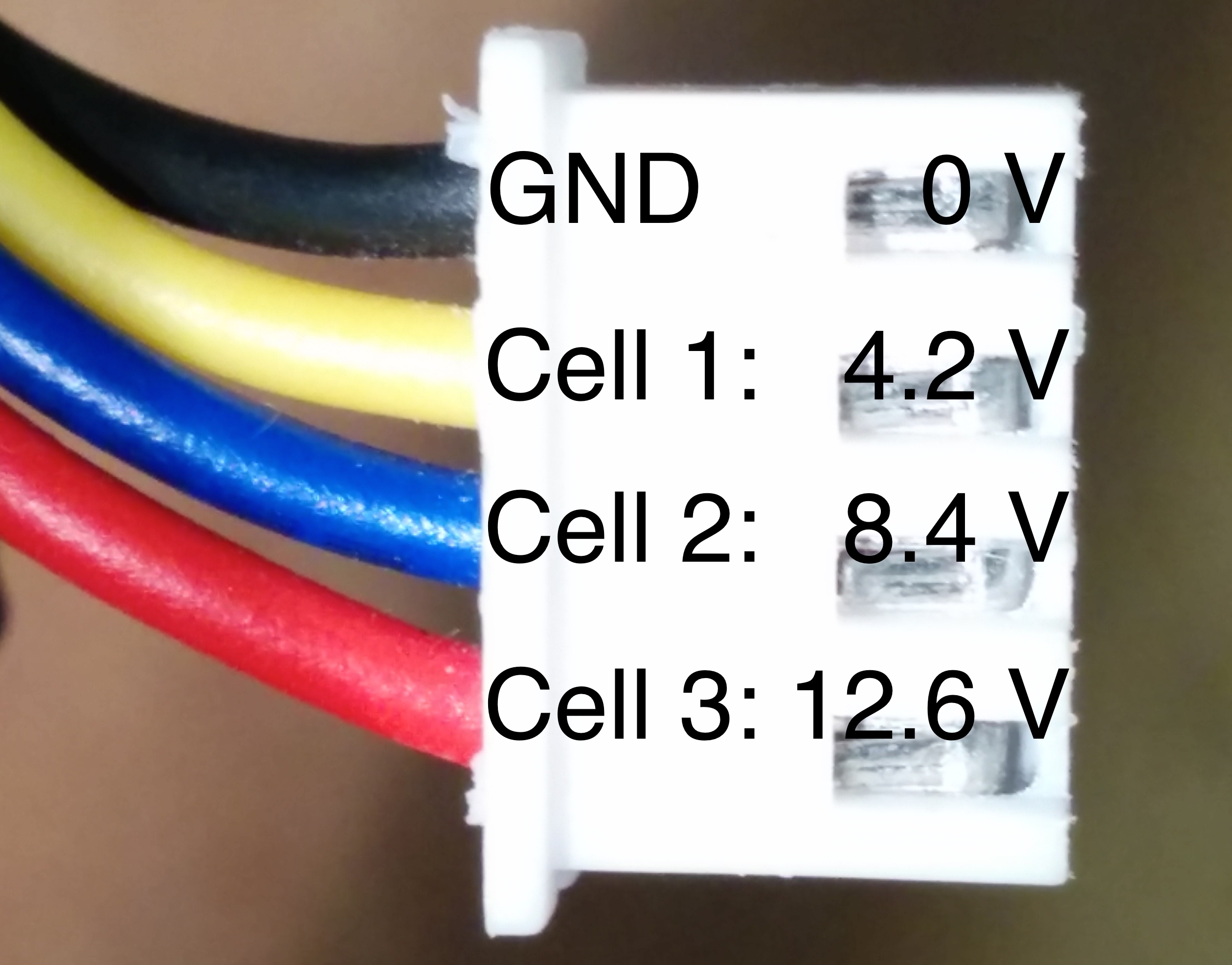Thank you for the reply. I'm a super noob so after reading all that I might be more confused! On my flight controller my original vtx used this for power i believe (VCC). After trying a new vtx hooked up exactly the same way, the vtx would not power when the quad did. Is there a way of knowing how many V are coming from this VCC line?
VCC has become the catchall for positive voltage input for hobby circuits, though this is not always correctly implemented. In more complicated PCBs with multiple you will see many other variations that will make small distinctions which you at this point probably don't care about or may never find yourself needing to know.
To understand what is being said with vcc you should know that the unit of Volts is used to state the electromotive potential that exist between two points of reference. A good way to show this is to measure the voltage across different pins on your balance plug.
Note how voltage is higher as you measure further down the series even though each battery cell is 3.7v. If you were to measure between the yellow and blue wire you would see 3.7v. This is because the potential difference between those two points is 3.7v. If you were to use yellow as your reference for ground and measure across to the red wire you would see 8.4v. This is the electromotive potential between those two points (measured in volts).
The format used for Vcc can also be used to represent the voltage potential between any two points. So for example you may see Vab to show the voltage measured from a to b, or Vac to show the difference between a and c (though some PCB designers might use the silk screen like that to mark VAC and VDC so a and c won't likely be used like this to avoid confusion).
So if Vab is the voltage from a and b is Vcc the voltage from c and c? No.
So why the two Cs? Vcc is a format used to show the potential between C and ground. Two letters are repeated to show the difference between that letter and ground. Unless you are working with a schematic for a class you will see this used mostly when a circuit involves transistors so VCC, VDD, VSS, and VEE
Examples of this being used:
TL;DR
It is probably positive voltage in for whatever circuit you are looking at.


